- Home
- Peter Ackroyd
Venice
Venice Read online
ALSO BY PETER ACKROYD
FICTION
The Great Fire of London
The Last Testament of Oscar Wilde
Hawksmoor
Chatterton
First Light
English Music
The House of Doctor Dee
Dan Leno and the Limehouse Golem
Milton in America
The Plato Papers
The Clerkenwell Tales
The Lambs of London
The Fall of Troy
The Casebook of Victor Frankenstein
NONFICTION
Dressing Up: Transvestism and Drag: The History of an Obsession
London: The Biography
Albion: The Origins of the English Imagination
BIOGRAPHY
Ezra Pound and His World
T.S. Eliot
Dickens
Blake
The Life of Thomas More
Shakespeare: The Biography
ACKROYD’S BRIEF LIVES
Chaucer
J.M.W. Turner
Newton
Poe: A Life Cut Short
POETRY
Ouch!
The Diversions of Purley and Other Poems
CRITICISM
Notes for a New Culture
The Collection: Journalism, Reviews, Essays, Short Stories, Lectures edited by Thomas Wright
Copyright © 2009 by Peter Ackroyd
All rights reserved. Published in the United States by Nan A. Talese / Doubleday, a division of Random House, Inc., New York.
www.nanatalese.com
Originally published in Great Britain by Chatto & Windus,
The Random House Group Ltd., London, in 2009.
Doubleday is a registered trademark of Random House, Inc. Nan A. Talese and the colophon are trademarks of Random House, Inc.
Library of Congress Cataloging-in-Publication Data
Ackroyd, Peter, 1949–
Venice : pure city / Peter Ackroyd. — 1st ed. in the United States of America.
p. cm.
“Originally published in Great Britain by Chatto & Windus, London,
in 2009”—T.p. verso.
1. Venice (Italy)—History. 2. Venice (Italy)—Social conditions. 3. Venice (Italy)—Social life and customs. 4. Venice (Italy)—Civilization. I. Title.
DG672.2.A25 2009b
945′.311—dc22
2010010350
eISBN: 978-0-385-53153-5
v3.1
For
Alison Samuel
Acknowledgements
I would like to thank my two research assistants, Thomas Wright and Murrough O’Brien, for their invaluable work on this project. I would also like to extend my thanks to my editor, Jenny Uglow, and my copy-editor, Jenny Overton.
Contents
Cover
Other Books by This Author
Title Page
Copyright
Dedication
Acknowledgements
List of Illustrations
Map
I City from the Sea 1 Origins
2 Water, Water Everywhere
3 Mirror, Mirror
Photo Insert 1
II The City of Saint Mark 4 The Saint Comes
5 Refuge
Photo Insert 2
6 Against Nature
7 Stones of Venice
Photo Insert 3
III Ship of State 8 “Let it be everlasting”
9 The Chosen People
Photo Insert 4
10 The Prison House
11 Secrets
12 Chronicles
IV Republic of Commerce 13 The Merchants of Venice
14 The Endless Drama
15 Wheels within Wheels
V Empire of Trade 16 The Lion City
17 Cities in Collision
18 A Call to Arms
VI Timeless City 19 Bells and Gondolas
20 Iustitia
21 Against the Turks
VII The Living City 22 The Body and the Building
23 Learning and Language
24 Colour and Light
25 Pilgrims and Tourists
VIII The Art of Life 26 Hurrah for Carnival
27 A Divine Art
28 The Eternal Feminine
29 What to Eat?
IX Sacred City 30 Divine and Infernal
31 Of Belief
X The Shadows of History 32 Decline and Fall?
33 Death in Venice
XI City of Myth 34 The Map Unrolls
35 The Huddled Family
36 Moon and Night
37 While the Music Lasts
A Venetian Chronology
Bibliography
List of Illustrations
Section One
i1.1 Cristoforo Sabbadino, Map of Venice, c.1557. Archivio di stato, Venice/Cameraphoto Arte Venezia/Bridgeman
i1.2 Perspective plan of Venice (detail). Musée du Louvre, Paris/Cameraphoto/Bridgeman
i1.3 The mosaics in Saint Mark’s cathedral, late 14c. Alinari/Rex Features
i1.4 The Madonna, cathedral of Santa Maria Assunta, Torcello, early 13c. akg-images/Cameraphoto
i1.5 The Flood, mosaic in the narthex, western portico, of Saint Mark’s cathedral, 13c. akg-images/Erich Lessing
i1.6 Tintoretto (Jacopo Robusti), The Stealing of the Body of Saint Mark, 1562–66. Galleria dell’Accademia/Cameraphoto/Bridgeman
i1.7 The Lion of Saint Mark, 15c., Museo Correr/Bridgeman
i1.8 Monks praying to Saint Theodore, from a Mariegola, 1350. Museo Correr/Bridgeman
i1.9 Simon Marsden, The columns of Saint Mark and Saint Theodore, Piazzeta San Marco. The Marsden Archive, UK/Bridgeman
i1.10 Gentile Bellini, Procession on the Piazza S. Marco, 1496. Galleria dell’Accademia/akg-images/Erich Lessing
i1.11 Piazza S. Marco, c.1880–90. Roger-Viollet/Rex Features
i1.12 Gentile Bellini, The Miracle of the Cross on San Lorenzo Bridge, 1500. Galleria dell’Accademia/Bridgeman
i1.13 Francesco Guardi, The Departure of the Bucintoro towards the Lido on Ascension Day (detail), 1766–70, Musée du Louvre/Giraudon/Bridgeman
i1.14 Vittore Carpaccio, The patriarch of Grado heals a possessed man on the Rialto Bridge (detail), 1494 Galleria dell’Accademia/akg-images/Cameraphoto
Section Two
i2.1 Paolo Veronese, The Battle of Lepanto, 1571. Galleria dell’Accademia, Venice/akg-images
i2.2 Plan of the Arsenal. Museo Correr, Venice/Bridgeman
i2.3 Franceso Segala, a Venetian warship, on the Mausoleum of Girolamo Michiel, c. 1558–59. Basilica of Sant’Antonio, Padua/Bridgeman
i2.4 Sign for the Marangoni family of shipbuilders, 1517. Museo Correr/Alinari/Bridgeman
i2.5 Jan van Grevenbroeck, Dredging a Canal, 18c. Museo Correr/Giraudon/Bridgeman
i2.6 Jan van Grevenbroeck, An Oar-Maker from the Arsenal, 18c. Museo Storico Navale, Venice/Bridgeman
i2.7 Jan van Grevenbroeck, A Venetian Doctor during the Plague, 18c. Museo Correr/Bridgeman
i2.8 Jan van Grevenbroeck, Venetian Bellmaker’s Shop, 18c. Museo Correr/Bridgeman
i2.9 Venetian glass in the Pauly showrooms, Milan, 1910. Alinari/Rex Features
i2.10 Lace workers on Burano, 19c. Collezione Naya-Bohm, Venice/Bridgeman
i2.11 Ferdinando Ongania, A Venetian Courtyard, c. 1880. Museo di Storia della Fotografia Fratelli Alinari, Florence/Bridgeman
i2.12 A funeral gondola, 1880–1920. Collezione Naya-Bohm, Venice/Bridgeman
i2.13 Giovanni Pividor, The railway bridge across the lagoon, from Views of Principal Monuments in Venice, 1850. Bridgeman
i2.14 The remains of the Campanile, La Domenica del Corriere, 27 July 1902. Cameraphoto Arte Venezia Corriere/Bridgeman
i2.15 “
Windows of the Early Gothic Palaces,” from John Ruskin, The Stones of Venice, 1851–3
Section Three
i3.1 Giovanni Bellini, Leonardo Loredan, Doge of Venice, c.1501. National Gallery, London/Bridgeman
i3.2 Joseph Heintz, Audience with the Doge in the College of the Ducal Palace, early 17c. Museo Correr/Bridgeman
i3.3 Pietro Uberti, Portrait of three lawyers, Orazio Bembo, Orazio Angarano and Melchior Gabriel, 1730. Palazzo Ducale/Cameraphoto/Bridgeman
i3.4 Jacobello del Fiore, Justice and the Archangels, 1421. Galleria dell’Accademia/Cameraphoto/Bridgeman
i3.5 The lion’s mouth. Palazzo Ducale/Bridgeman
i3.6 The Pozzi prison, from Vedute delle Prigioni, 18c. Museo Correr/Bridgeman
i3.7 Vittore Carpaccio, Dream of Saint Ursula, 1495, Galleria dell’Accademia/Cameraphoto/Bridgeman
i3.8 Pietro Longhi, The Tailor, 1742–3. Galleria dell’Accademia/Cameraphoto/Bridgeman
i3.9 Pietro Longhi, The Geography Lesson, c.1750–2. Galleria Querini-Stampalia/Bridgeman
i3.10 Pietro Longhi, The Perfume Seller, c.1750. Ca’Rezzonico, Museo del Settecento/Alinari/Bridgeman
i3.11 Madonna of Mercy, 16c. Museo Correr/Alinari/Bridgeman
i3.12 Paolo Veneziano, Madonna and Child Enthroned with Two Devout People, 14c. Galleria dell’Accademia/Cameraphoto/Bridgeman
i3.13 Giovanni Battista Cima da Conegliano, The Coronation of the Virgin, late 15c. Santi Giovanni e Paolo, Venice/Cameraphoto/Bridgeman
i3.14 Giorgione (Giorgio da Castelfranco), The Tempest, c.1506–8. Galleria dell’Accademia/Cameraphoto/Bridgeman
i3.15 Giovanni Bellini, Young Woman at Her Toilet, 1515. Kunsthistorisches Museum, Vienna/akg-images/Erich Lessing
i3.16 Titian (Tizian Vecellio), Venus of Urbino (detail), before 1538. Galleria degli Uffizi, Florence/Bridgeman
Section Four
i4.1 Paolo Veronese, The Marriage Feast at Cana (detail), c. 1562. Musée du Louvre/Giraudon/Bridgeman
i4.2 Gabriele Bella, Concert by the girls of the hospital music societies in the Procuratie, Venice, 18c. Galleria Querini-Stampalia/Bridgeman
i4.3 Francesco Guardi, The Parlour of the San Zaccaria Convent, 18c. Ca’Rezzonico, Museo del Settecento, Venice/Bridgeman
i4.4 Pietro Bianchi, Cross-section of a theatre on the Grand Canal, 1787
i4.5 Alessandro Longhi, Carlo Goldoni, 18c. Casa Goldoni, Venice/Bridgeman
i4.6 Jan van Grevenbroeck, Venetian Noblemen in a Café, 18c. Museo Correr/Bridgeman
i4.7 Giandomenico Tiepolo, Pulcinella with Acrobats, fresco 1793. Ca’Rezzonico, Museo del Settecento/Alinari/Bridgeman
i4.8 Francesco Guardi, Three Masked Figures in Carnival Costume, c.1765. Museo Correr/Bridgeman
i4.9 Canaletto (Giovanni Antonio Canal), Regatta on the Grand Canal, 1735–40. Bowes Museum, Barnard Castle, County Durham/Bridgeman
i4.10 V. Ponga, Masked Ball in Saint Mark’s Square, 19c. Caffe Quadri, Venice/Bridgeman
i4.11 Gabriele Bella, Battle with Sticks on the Ponte Santa Fosca, 18c. Galleria Querini-Stampalia/Giraudon/Bridgeman
i4.12 Gabriele Bella, Game of Bowls in the Campo dei Gesuiti, 18c. Galleria Querini-Stampalia/Bridgeman
i4.13 Sir Claude Francis Barry Bart., RBA, The Bridge of Sighs, etching, c.1930. Private collection/Bridgeman/www.sirfrancisbarry.com
i4.14 Cover of René Jeanne, Casanova, 1927, with photographs from Andre Volkoff 1926 film. Private collection/Archives Charmet/Bridgeman
i4.15 Hugo d’Alesi, travel poster for the Chemin de fer de l’Est, Paris to Venice, 19c. Stapleton Collection/Bridgeman
Part Titles. The vignettes, engraved by Dionisio Moretti, are taken from Antonio Quadri, Il Canal Grande di Venezia (1831)
I
City from the Sea
1
Origins
They voyaged into the remote and secluded waters. They came in flat-bottomed boats, moving over the shallows. They were exiles, far from their own cities or farms, fleeing from the marauding tribes of the North and the East. And they had come to this wild place, a wide and flat lagoon in which fresh water from the rivers on the mainland and salt water from the Adriatic mingled. At low tide there were mud-flats all around, cut through with streams and rivulets and small channels; at high tide there were small islands of silt and marsh-grass. There were shoals covered with reeds and wild grasses, rising just a little way above the waters. There were patches of land that were generally submerged but, at certain low tides, rose above the water. There were desolate marshes that the water only rarely covered. The salt marshes and the shore seemed from a distance to make up the same wide expanse, marked with ponds and islets. There were swamps here, too, as dark and uninviting as the waters that the tide did not reach. A line of islands, made up of sand and river debris, helped to protect the lagoon from the sea; these were covered with pine woods.
Although the lagoon was not far from the once great centres of Roman civilisation, it was remote and secluded. This was a solitary place, its silence broken only by the calls of the seabirds and the crash of the billows of the sea and the sound of the wind soughing in the rushes. At night it was the setting of a vast darkness, except in those patches where the moon illumined the restless waters. Yet in the daylight of the exiles’ approach the silver sea stretched out into a line of mist, and the cloudy sky seemed to reflect the silvery motions of the water. They were drawn into a womb of light. They found an island. And a voice, like the sound of many waters, told them to build a church on the ground they had found. This is one of the stories of origin that the Venetians told.
The lagoon itself is an ambiguous area that is neither land nor sea. It is approximately thirty-five miles (56 km) in length and seven miles (11 km) in width, taking a crescent shape along part of the coast of north-eastern Italy. It was created some six thousand years ago, emerging from the mud and silt and debris that came down into the Adriatic from seven rivers. The principal among them—the rivers Brenta, Sile and Piave—carried material from the Alps and the Apennines; a city of stone would one day rise on the minute debris of mountains. The swamps and marshes and mud-flats are protected from the sea by a long and narrow bank of sand, divided into islands by several channels; the longest of those islands is now known as the Lido. The channels make openings in the barrier, entrances known as porti, through which the sea rushes into the lagoon. There are now three such porti at the Lido, at Malamocco and at Chioggia. These tides breathe life into Venice.
It is a continually various and unsettled scene, part mud and part sand and part clay; it is changed by tides, always shifting and unstable. There is a current in the Adriatic that flows up and down from the Mediterranean, and each of the porti creates its own distinct basin or force of water. That is why the appearance of the lagoon has altered over the centuries. There is one theory that, as late as the sixth and seventh centuries, the lagoon was essentially a marsh covered by water at high tide. In the nineteenth century, according to John Ruskin, there were times at low tide when it seemed that Venice was marooned on a vast plain of dark green seaweed. The whole lagoon in fact would have become dry land five hundred years ago, were it not for the intervention of the Venetians themselves. The lagoon is now simply another part of Venice, another quarter that happens to be neither land nor sea. But it is slowly returning to the sea. The waters are growing deeper, and more salty. It is a precarious place. Saint Christopher, carrying the infant Christ across the water, was once a popular saint of the city.
There have always been inhabitants of the lagoon. The wilderness could, after all, be fruitful. From the earliest times there were small pockets of people—fishermen and fowlers ready to take advantage of the abundance of wildfowl and marine life as well as the autumnal migration of the fish from the rivers to the sea. The marshes are also a natural place for the harvesting of salt. Salt was a valuable commodity. The Venetians were always known as a mercantile people, but the first stirrings of trade in this area began even before their ancestors had
arrived.
The earliest tribes are lost in the darkness of prehistory. But the first recognisable ancestors of the Venetians inhabited the region surrounding the lagoon from the eighth century BC. These were the people who dwelled in the north-eastern part of Italy as well as along the coasts of what are now Slovenia and Croatia. They were known as the Veneti or the Venetkens; Homer refers to them as the “Enetoi,” because there is no “v” sound in classical Greek. They were primarily merchants, as the Venetians would become, trading in amber and wax, honey and cheese. They set up great markets, like those which the Venetians eventually established. They traded with Greece, just as Venice would one day trade with Byzantium and the East. They specialised in the extraction of salt from coastal areas, in a way that anticipates the Venetian monopoly of salt production.
They dressed in black, which became the colour characteristically worn by patrician Venetian males. Hercules was the tribal hero of the Veneti, and became a legendary protector of Venice; he is the demigod who acquires by labour what others claim by right. The Veneti traced their descent from Antenor, who led them from the ruined city of Troy. They were well known for their skill in seamanship, and were essentially a maritime people. They submitted, in marital and familial matters, to the authority of the state. These were the people who inhabited cities such as Padua and Altino, Aquileia and Grado. These were the exiles who came for safety to the waters of the lagoon.
Before the time of flight, the Veneti were thoroughly Romanised. By the second century AD they had made a pact with the powers of Rome. In the reign of Augustus the area of the lagoon was part of the Tenth District of Italy and then in the fourth century it became part of the eastern Roman Empire, the Byzantine Empire. The lagoon was already partly settled. On one of the islands, S. Francesco del Deserto, have been found the remains of a Roman port with pottery from the first century and wall plaster of the third century.

 The Clerkenwell Tales
The Clerkenwell Tales The Canterbury Tales
The Canterbury Tales J. M. W. Turner
J. M. W. Turner Chatterton
Chatterton The Canterbury Tales – A Retelling
The Canterbury Tales – A Retelling Alfred Hitchcock
Alfred Hitchcock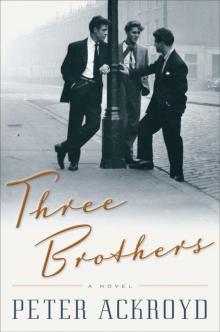 Three Brothers
Three Brothers Wilkie Collins
Wilkie Collins Venice
Venice Poe
Poe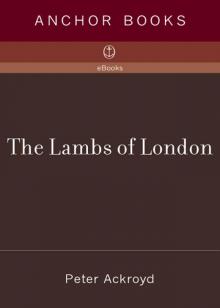 The Lambs of London
The Lambs of London London
London Queer City
Queer City Revolution, a History of England, Volume 4
Revolution, a History of England, Volume 4 Venice: Pure City
Venice: Pure City Foundation
Foundation Thames
Thames The Plato Papers
The Plato Papers The house of Doctor Dee
The house of Doctor Dee Rebellion: The History of England from James I to the Glorious Revolution
Rebellion: The History of England from James I to the Glorious Revolution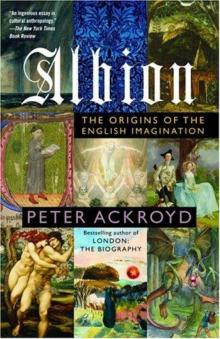 Albion: The Origins of the English Imagination
Albion: The Origins of the English Imagination The Fall of Troy
The Fall of Troy The Death of King Arthur
The Death of King Arthur The Trial of Elizabeth Cree
The Trial of Elizabeth Cree London: The Biography
London: The Biography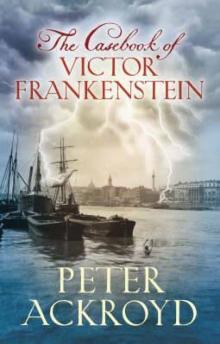 The Casebook of Victor Frankenstein
The Casebook of Victor Frankenstein Hawksmoor
Hawksmoor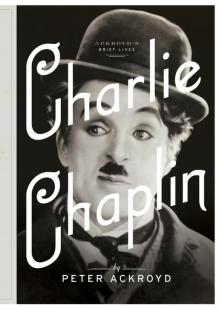 Charlie Chaplin
Charlie Chaplin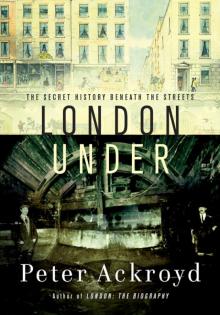 London Under
London Under